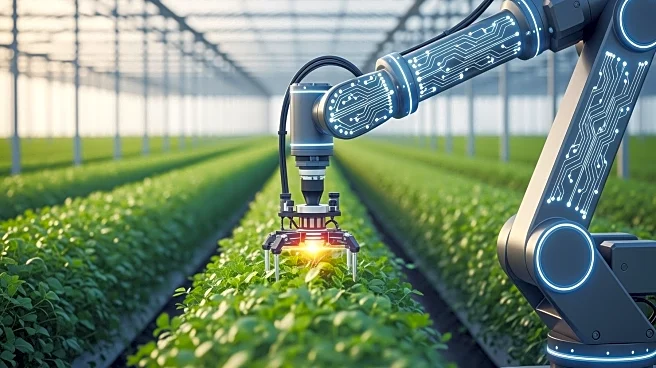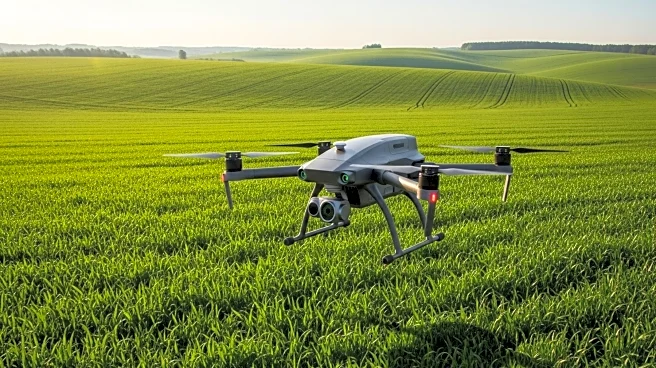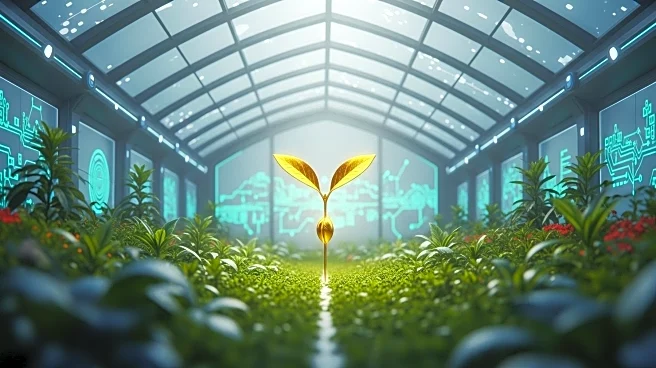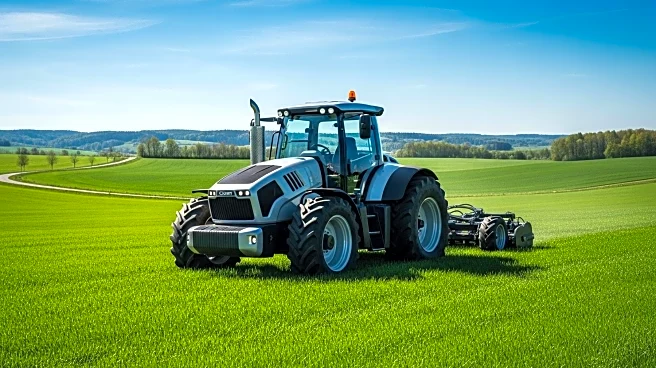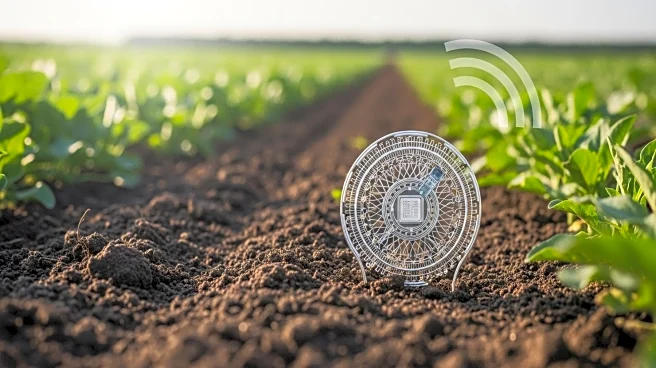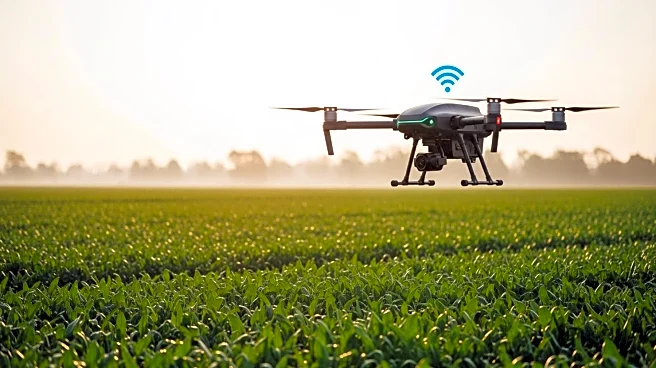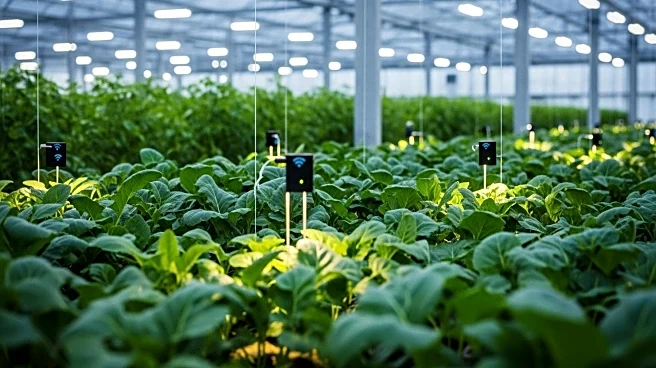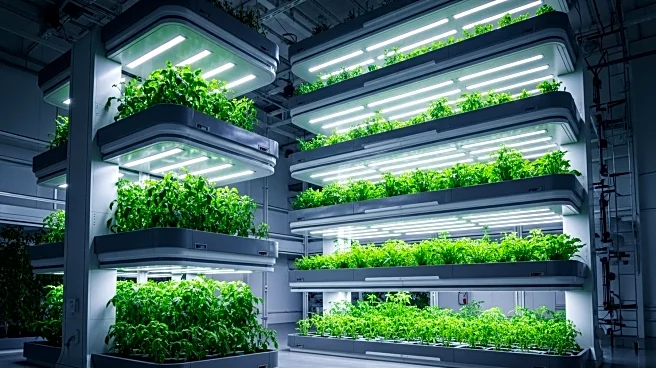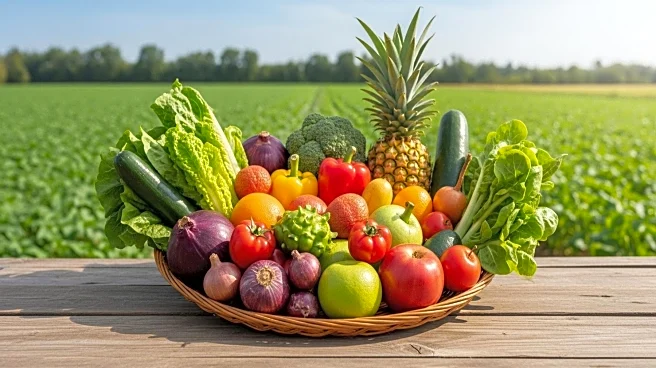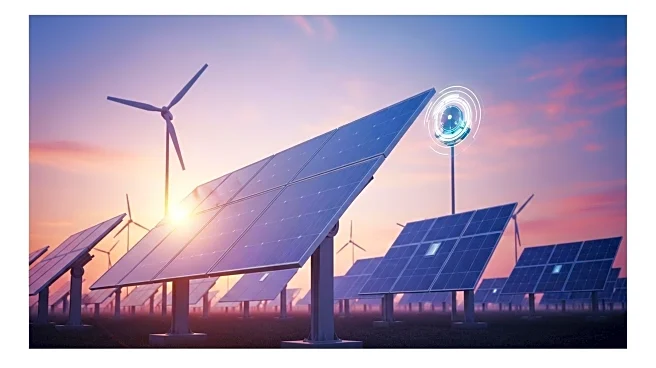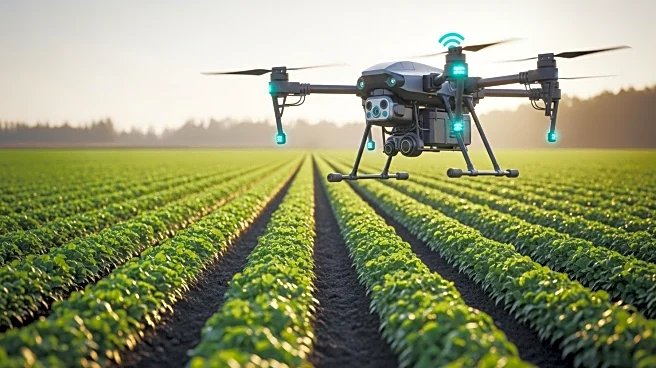What's Happening?
Robotic technologies are increasingly being integrated into smart farming practices, transforming traditional agricultural operations into highly efficient, data-driven ecosystems. Autonomous tractors,
drones, and sensor networks are being utilized to optimize productivity and sustainability in farming. These technologies help farmers make faster and smarter decisions by easing labor demands, reducing input waste, and automating manual routines. The integration of advanced sensors, artificial intelligence (AI), and machine learning (ML) allows robotic platforms to manage core tasks such as planting, monitoring, weeding, harvesting, and resource allocation. Despite rapid progress, most agricultural robots are still in early commercial or pilot phases, with large-scale deployment primarily occurring in high-value crop and precision-farming operations.
Why It's Important?
The adoption of robotics in agriculture is crucial for addressing challenges such as labor shortages, climate stress, resource optimization, and the need for increased food security. By automating fundamental agricultural tasks, these technologies reduce the need for human labor and improve efficiency across large fields. The use of AI and ML enables robots to continuously refine their performance, adapt to changes in the field, and optimize actions, which enhances productivity and sustainability. As these technologies progress, they are expected to play a significant role in food security, environmental protection, and rural economies, positioning agriculture as an adaptive and resilient sector capable of thriving amid increasing demands and constraints.
What's Next?
Future developments in agricultural robotics are expected to focus on systems that can diagnose, plan, act, and report with minimal human intervention. Innovations such as robotic swarms, which involve groups of robots working collaboratively, hold the potential to bring about significant efficiencies for large and diverse farms. These systems will also connect with sustainability efforts, ensuring responsible use of resources and supporting eco-labels. Regulatory frameworks and education initiatives will continue to modernize the agricultural technology baseline, although human supervision will remain essential for safety validation, adaptive decision-making, and ethical oversight.
Beyond the Headlines
The integration of robotics in agriculture raises important ethical, legal, and cultural considerations. Ensuring equitable access to these technologies, especially for smaller operations and regions with limited infrastructure, is a key challenge. Strong regulatory frameworks, open data standards, and inclusive training ecosystems are necessary to support farmers across all levels of digital readiness. The conversation needs to shift from whether farms will adopt these technologies to how they will do it sustainably and at scale, translating technical innovation into accessible, farmer-ready tools.
